- Home
- Bill Bryson
The Road to Little Dribbling Page 7
The Road to Little Dribbling Read online
Page 7
What is perhaps most extraordinary is how very nearly so much of it was lost. In the 1950s, Britain became obsessed with the idea that it needed to modernize, and that the way to do so was to tear down most of what the Germans hadn’t bombed and cover what remained under steel and concrete.
One after another through the 1950s and ’60s grand plans were unveiled to bulldoze and rebuild great chunks of London. Piccadilly Circus, Covent Garden, Oxford Street, the Strand, Whitehall and much of Soho all were proposed for redevelopment. Sloane Square was to be replaced with a shopping centre and twenty-six-storey apartment block. The area from Westminster Abbey to Trafalgar Square would become a new government district, ‘a British Stalingrad of concrete and glass slabs’, in the words of Simon Jenkins. Four hundred miles of new motorways were to sweep through London and a thousand miles of existing roads, including Tottenham Court Road and the Strand, were to be widened and made faster – essentially turned into dual carriageways – to tear through the heart of the city. Throughout central London pedestrians wishing to cross busy roads would be directed into tunnels or up on to metal or concrete footbridges. Walking through London would be like endlessly changing platforms at a mainline railway station.
It all seems a kind of madness now, but there was remarkably little opposition. Colin Buchanan, Britain’s most influential planner, promised that sweeping away the accumulated clutter of centuries and building gleaming new cities of concrete and steel would ‘touch a chord of pride in the British people and help to give them that economic and spiritual lift of which they stand in need’. When a developer named Jack Cotton proposed to clear out most of Piccadilly Circus and build a 172-foot-high tower that looked like a cross between a transistor radio and a workman’s toolbox, the proposal received the blessing of the Royal Fine Art Commission. It was passed without dissent at a secret meeting of the Westminster Planning Department. Under Cotton’s plan, the statue of Eros was to be raised up to a new pedestrian platform and integrated with a network of walkways and footbridges to keep people safely segregated from the speeding traffic below.
In 1973, the year I first settled in Britain, the most sweeping plan of all was unveiled: the Greater London Development Plan. This elaborated on all the earlier proposals and called for building a series of four orbital motorways, which would encircle the city like ripples on a pond, with twelve radial expressways bringing all the capital’s motorways – M1, M3, M4, M11 and M23 – into the heart of the city. Freeways, mostly elevated, would slice through Hammersmith, Fulham, Chelsea, Earls Court, Battersea, Barnes, Chiswick, Clapham, Lambeth, Islington, Camden Town, Hampstead, Belsize Park, Poplar, Hackney, Deptford, Wimbledon, Blackheath, Greenwich – nearly everywhere. A hundred thousand people would lose their homes. Almost nowhere would be spared the roar of speeding traffic. Remarkably, many people couldn’t wait for this to happen. A writer for the Illustrated London News insisted that people ‘enjoyed being close to busy traffic’ and cited the new Spaghetti Junction interchange in Birmingham as a place made lively and colourful by its infusion of speeding vehicles. He noted also the propensity of British people to picnic in laybys, which he interpreted as a fondness for ‘noise and bustle’, rather than the fact that they were just insane.
The Greater London Development Plan would have cost a then-colossal £2 billion, making it the biggest public investment ever made in Britain. That was its salvation. Britain couldn’t afford it. In the end, the visionaries were undone by the unmanageable scale of their own ambitions.
It is a mercy, of course, that none of these grand schemes ever saw life. But tucked in among them was one proposal that was quite different from all the others and might actually have been worth trying. It was called Motopia, and that is where I was headed next.
Chapter 5
Motopia
I TOOK THE 8.28 from Waterloo to Wraysbury via many stations. It was the morning rush hour, but all the rushing was in the opposite direction. My train was pleasingly empty. British train interiors used to be heavy and gloomy in a way that perfectly suited the dull, cheerless, stolid business of commuting. Now trains are full of bright oranges and reds. This one was rather annoyingly festive, like a children’s fairground ride. I felt as if I should have a toy steering wheel and little bell by my seat.
I was the only person to alight at Wraysbury station, which was unmanned and rather spookily deserted. The station stood a mile or so from the village, but it was a diverting walk along a shady lane. Wraysbury is a strange, cut-off place. It is on the Thames opposite Runnymede and only a couple of miles from Windsor Castle as the crow flies, but it might as well be in Caithness for all its accessibility. It is isolated from the outside world by an almost ludicrous number of barriers – two motorways (the M4 and M25), a railway line, acres of old gravel pits, an unbridged stretch of the Thames, three enormous reservoirs buttressed by hill-sized grassy banks and bounded by miles of high-security fences, and, finally, the great, impenetrable sprawl of Heathrow Airport and its service areas. The road approaches to Wraysbury are through zones largely filled with light industry, cement works, pumping stations and other realms of heavy lorries and Keep Out signs. No one arrives in Wraysbury by accident and not many go there on purpose, but those who manage to pick their way through the surrounding dust and clutter find themselves in a sudden oasis of attractive tranquillity – or at least tranquil up to a height of about five hundred feet, for aeroplanes crowd the skies nearby as they begin and end their voyages at Heathrow.
But for those who can adjust to the noise above, Wraysbury is a rather sweet and agreeable place. The village centre has a church and a broad green with a cricket pavilion, a couple of good pubs and a cluster of useful shops. The surrounding gravel pits have been filled with water to make recreational lakes, which are now the homes of many sailing and windsurfing clubs. Many of the houses are large and attractive, particularly where they overlook water. My wife grew up just across the Thames in Egham. From her side of the river, Wraysbury’s rooftops are visible among the trees. This much I had seen a thousand times, but I had never been there, never had a reason to go.
‘You’ll like it,’ my wife promised. She would know, for her father came from Wraysbury. He grew up in a small, dark, decrepit cottage with his poor widowed mother and elder sister at the end of a quiet, wooded lane a quarter of a mile or so from the village centre. The cottage had no electricity or running water. The toilet was a privy at the bottom of the garden. My father-in-law used to tell us stories of how he would walk seven miles to Staines and back on a Saturday evening to buy a bag of stale buns for their supper, for that was all they could afford. It was a different world.
My wife had told me where the cottage was, and I found my way there now – or at least I found my way to where it had once been, for the cottage itself is long gone. It was blown to smithereens by a German bomb in 1943. Wraysbury offered nothing in the way of targets, so the bomber was either lost or perhaps just emptying out his bomb bay before turning for home. In any case, his tumbling bomb scored a direct hit – a perfect, obliterating hit – on my father-in-law’s house. Luckily, no one was in at the time, so no one was injured, but the family lost everything and had to be rehoused. Thanks to his changed circumstances my father-in-law met a girl whom he would not otherwise have met, and in the fullness of time they married and produced two children, one of whom grew up and married me. So the direction of my life, not to mention the very existence of my children and grandchildren and whoever else follows, is directly consequent upon a German bomb that fell randomly on Wraysbury on a summer’s evening long ago. I suppose all our lives must be at the end of a long chain of improbable coincidences, but it did seem fairly extraordinary to me, as I stood looking at the site of a long-vanished cottage, to think that if that bomb had fallen a hundred yards to either side or where the Germans had intended it to go, then my wife would never have existed and I wouldn’t be in Wraysbury now. It further occurred to me that every bomb that fell in the war, on both sid
es of the Channel, must have changed lives in that way.
And with that weighty thought to chew upon, I turned and set off for the forgotten site of Motopia. Had Motopia been built, everyone would know Wraysbury today. Motopia was a proposed model community based on the uniquely unexpected idea of banishing cars. It was the dream of Geoffrey Jellicoe, who wasn’t a town planner at all. He was a landscape architect, which doubtless explains why he gave cars a low priority. (No one seems to have noticed that Motopia was an odd name for a place that was designed to be essentially car-free.) Jellicoe’s singular idea was to put the community’s roads on rooftops, five storeys up. Motopia was essentially to be a single giant building in the shape of a lattice, standing in a kind of blue and green Eden of lakes and parkland. The lakes were to be fashioned out of the old gravel pits, which itself was quite a novel idea then. So Jellicoe had two big ideas that were radically out of step with the period – finding new uses for old industrial infrastructure and banishing cars from the daily landscape. Nobody thought like this then.
Altogether Motopia was to provide housing, shopping, offices, theatres, libraries, cinemas and schools for a population of 30,000. Jellicoe envisioned people getting from place to place on moving walkways or in taxi boats along lakes and a small network of canals. He called his rooftop roads ‘motorways in the sky’, which was more than a little absurd because the whole town was only ten blocks or so across at its widest expanse and there were roundabouts every thirty or forty yards, so there was hardly scope for motorway-style acceleration, but his heart clearly was in the right place. The whole proposal was treated seriously enough that a site was chosen for it at Wraysbury and detailed plans were drawn up. It would have been lovely, if a little impractical. It certainly would have been worth trying. People would have come from all over the world to see it, so I was curious myself to see now this thing that never was.
Much of the proposed site for Motopia now lies under the M25 motorway and the neighbouring Wraysbury Reservoir, built in 1967, but a good chunk of it remains undeveloped on Staines Moor, to the east of the village. It was an unexpectedly lovely walk down a green lane, with large, well-tended homes on one side and a broad, restored gravel pit, dotted with boats and sailboards, on the other. I passed beneath the deafening roar of the M25 and at length I came to a metal gate and an information board, put up by Spelthorne District Council, inviting me to follow a muddy track to Staines Moor. The track led to a bridge across a railway line and thence to an underpass beneath the busy Staines bypass.
It didn’t look terribly promising, and I might almost have turned back, but I saw that the underpass had a mural painted on it and out of a kind of politeness I went to inspect it. It depicted the animals to be found on the moor and was lovingly done by an artist with real talent, who clearly felt some passion for this unknown piece of land. Intrigued, I walked to the end of the tunnel and stepped out into an astonishing sight – a sweep of green and golden countryside, a meadowland of trees and water, leading away to low green hills (which in actuality were the slopes of the surrounding reservoirs). It was as if someone had taken a square mile of best Suffolk countryside and dropped it into the space between the A30 and M25. Just before me the little River Colne broadened into a kind of marshy pond. A heron eyed me with irritation and with a few lazy flaps of wing departed to a spot a hundred yards away. In the middle distance planes took off from Heathrow, their noise a low grumble. The roar of traffic was reduced to a tolerable hum by the acres of waving grass.
Only gradually did I remember that I was standing in what would have been the heart of Motopia, and I suddenly realized that it would have been seriously unfortunate if they had sacrificed this forgotten moor to build a town here. For the 20,000 people of Staines, this was the only bit of accessible countryside for miles, but it was much more than that. An information board beside the pond informed me that this land had not changed in a thousand years. One hundred and thirty species of birds and three hundred species of plants had been recorded here.
I came upon a guy with a thousand tattoos walking a vicious-looking dog, but he said hello in a friendly manner.
‘It’s gorgeous here,’ I said.
‘Yeah,’ he agreed. ‘Shame if they build on it.’
‘Is it under threat?’ I asked in sincere alarm.
‘They wanna put a runway here, mate.’
‘Here?’ Heathrow seemed miles away – way beyond anything that could be reasonably considered contiguous.
He nodded. ‘You might be dodging jumbo jets next time you come here,’ he said and pleased himself with that.
Later I looked up Heathrow’s proposals and he was right. Staines Moor is the site of what is known as the South West Option for a third Heathrow runway. Under the proposal, Staines Moor would vanish completely. The new runway would extend Heathrow a mile to the south and a mile to the west, taking the airport to the very edge of Wraysbury. All the lovely homes I had just walked past, as well as the lake beside them, would vanish. So would half of Wraysbury Reservoir. People in Wraysbury would be so close to the end of the runway that passing planes would all but blow their hats off their heads. The noise would surely be unbearable. Staines Moor would cease to exist at all.
The no-man’s-land clinging to the edges of the Staines bypass and M25 is not a world built for pedestrians. It exists for the benefit of motorists and for people who need to get rid of large numbers of tyres, old mattresses and the remnants of demolished kitchens. Eventually amid puddles and detritus I came unexpectedly upon a footpath sign pointing the way towards Egham via a bridge over the Thames. This consisted of a path that ran exactly alongside, but about twenty-five feet below, the M25. It was surprisingly peaceful and rather lovely. The noise of traffic passed straight overhead, audible but strangely and pleasantly distant. I was in a calm world of greenery – a little tunnel through woodland. Butterflies flitted between stalks of wild buddleia. Swarms of tiny insects pulsated in the sunlight.
After about half a mile the path sloped upwards and abruptly emerged right beside the motorway at a bridge, where both motorway and path crossed the river together, divided by a waist-high barrier. I walked on to the bridge and into a most remarkable experience. On my left-hand side was a roar of speeding traffic ten lanes across – the busiest stretch of road in Europe. But to my right was a scene of utter charm – a Thames tableau caught in a moment of summery perfection. About a hundred yards away was a lock and pretty weir. A motorboat was in the lock, its owners doing things with ropes and cranks. Beside the lock was a hotel with a terrace where people were having lunch in the sun. On the opposite side of the river were moored boats and attractive cottages. If you were standing at a rack of postcards, this is the view you would select. Yet behind me, near enough to make my jacket flap, was the ceaseless flight of traffic. I was on the boundary between two worlds yards apart but wholly unaware of each other. It was surreal.
I don’t think anyone ever crosses this bridge on foot. Ahead of me, the path was so overgrown as to be obliterated. I pushed through lush sprays of lacy flowers and nodding daisies. There were wildflowers of purple and yellow and the most delicate pale blue. This was a garden growing on concrete. That is the most extraordinary fact about Britain. It wants to be a garden. Flowers bloom in the unlikeliest places – on railway sidings and waste grounds where there is nothing beneath them but rubble and grit. You even see clumps of flowery life growing on the sides of abandoned warehouses and old viaducts. If all the humans in the UK vanished tomorrow, Britain would still be in flower. This is in complete contrast to America where nature is wild and raw. You need flamethrowers to keep the weeds in check where I come from. Here it is just miles of accidental loveliness. It is really quite splendid.
At the bottom of the slope, I stepped out of this little wilderness on to the other side of the Thames and was confronted with one of my favourite views – the grassy, unspoiled flatness of Runnymede meadow running up to the bottle-green majesty of Cooper’s Hill, the most
prominent eminence in this part of Surrey. I have known this area for years, but had never approached it from this angle or crossed Runnymede on foot and was pleased to do so now. It is just a great empty field, now maintained by the National Trust, but it is ineffably glorious, particularly on a fine day such as I had now. At the top of Cooper’s Hill is one of the country’s great little-known shrines, the Air Forces Memorial, where beautifully inscribed in stone are the names of 20,456 airmen who died in the Second World War but have no grave. It is serenely beautiful and moving – I can’t recommend it too highly – but it is at the top of a long, steep hill and was too distant for me to reach now. I headed instead across the field to the Magna Carta memorial, a little open-air rotunda erected in 1957 by the American Bar Association and memorable today as the only nice thing ever done by lawyers. It commemorates, of course, the signing of the Magna Carta somewhere in the vicinity. (No one knows exactly where. It was a long time ago.) I had it all to myself, as I expect any visitor would on most days.
Beyond, and of more particular interest to me, was the Kennedy Memorial, erected in memory of JFK shortly after his assassination. You reach it by going up a steepish path through the woods. The designer, I was delighted to discover, was none other than our old friend Geoffrey Jellicoe.
Jellicoe didn’t have a huge budget or much time – the memorial was thrown up in the immediate aftermath of Kennedy’s death – but he made the most of what he had. The path is made from sixty thousand small granite setts, joined together to make steps, and it meanders up the hill in an attractively sinuous fashion. At the top is a large block of granite, cracked in places and showing obvious signs of repair here and there. The block was inscribed with part of Kennedy’s inauguration speech. Beside it was a bench and a hawthorn tree. There was no one else around. I felt like I was the first person in years to go there.

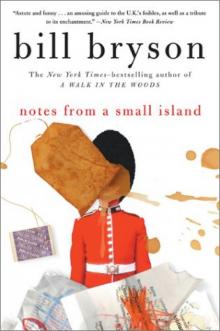 Notes from a Small Island
Notes from a Small Island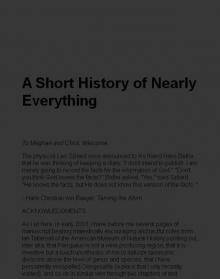 A Short History of Nearly Everything
A Short History of Nearly Everything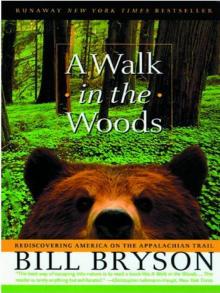 A Walk in the Woods
A Walk in the Woods I'm a Stranger Here Myself
I'm a Stranger Here Myself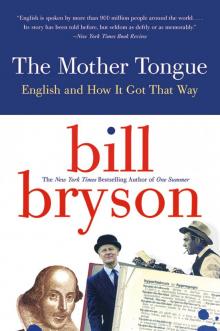 The Mother Tongue
The Mother Tongue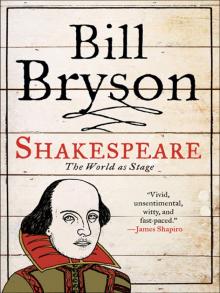 Shakespeare
Shakespeare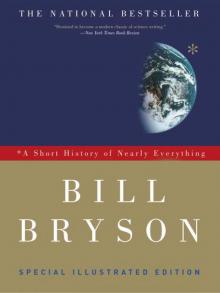 A Short History of Nearly Everything: Special Illustrated Edition
A Short History of Nearly Everything: Special Illustrated Edition The Best American Travel Writing 2016
The Best American Travel Writing 2016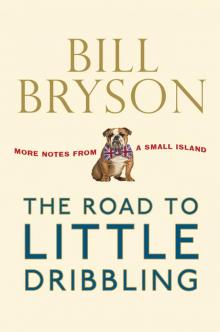 The Road to Little Dribbling
The Road to Little Dribbling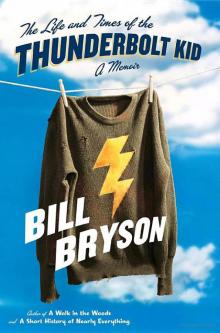 The Life And Times Of The Thunderbolt Kid: A Memoir (v5.0)
The Life And Times Of The Thunderbolt Kid: A Memoir (v5.0) Made In America
Made In America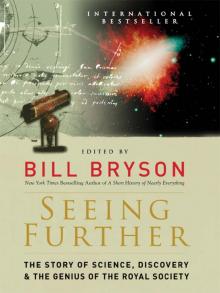 Seeing Further
Seeing Further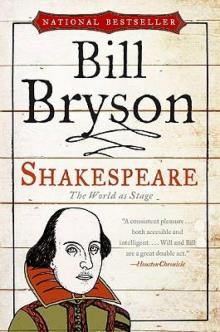 Shakespeare: The World as Stage
Shakespeare: The World as Stage The Life and Times of the Thunderbolt Kid
The Life and Times of the Thunderbolt Kid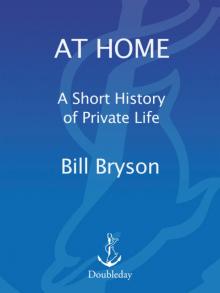 At Home
At Home Bryson's Dictionary For Writers And Editors (v5.0)
Bryson's Dictionary For Writers And Editors (v5.0) Neither Here Nor There
Neither Here Nor There Bill Bryson's African Diary
Bill Bryson's African Diary